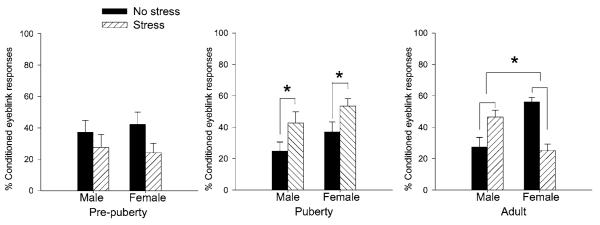Figure 3.
Stress during puberty and its effect on subsequent learning. Male and female rats of different ages were exposed to an acute stressor of brief intermittent tailshocks and were trained 24 hours later on a classical eyeblink conditioning task using a trace paradigm. Conditioning in males and females that were stressed and trained before puberty was unaffected by exposure to the stressful event. In contrast, conditioning in males and females that were stressed and trained during puberty was enhanced. As adults, however, sex differences in conditioning and the response to stress emerged. Specifically, females emitted fewer conditioned responses after exposure to the stressful event, especially if they were trained in proestrus (Hodes & Shors 2005a).

